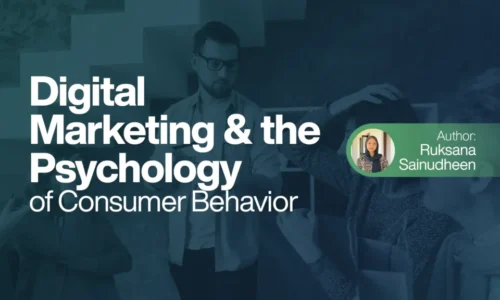Securing Your Brand’s Future: Enduring Strategies in a Volatile and Unpredictable Market
In today’s fast-changing and fast-paced market, businesses face challenges that are always unpredictable as well as complicated to handle. In the last 5 years, most of these companies have embarked on large scale transforming programmes and so pumping tremendous amount of manpower and resources into these exercises, the actual business impact of these initiatives has been underwhelming and far less effective than expected. Along with-it underlying fundamentals that supported traditional business models have changed; what worked in the past is not working today in other words, their value is diminishing. In such an environment, brands need urgent strategies that guarantee long-term success.
Table of Contents

VUCA MODEL
This model captures ‘the spirit of the age’ while allowing for practical application. What we are currently experiencing is that many legacy enterprises have started their digital journey without recognizing the full impact of the VUCA world we are in, which results in limiting the true potential of digital business world of the enterprise but also experiencing frustrating failure of the time.
What is VUCA
A VUCA market is a business environment that is volatile, uncertain, complex, and ambiguous. The term, originally used by the U.S. Army War College, refers to the dynamic and often unpredictable challenges that firms confront today.
- Volatility: Abrupt changes in the market or advances in technology
- Uncertainty: The inability to forecast future occurrences
- Complexity: A lot of interconnected elements that make determining causes and consequences challenging.
- Ambiguity: Information that is unclear or inconsistent
Here are some essential approaches toward future-proofing your brand in a volatile and unpredictable market. To thrive in such an environment, brands would have to take strategies which will help survive the market and, therefore, be resilient in the long run.
Embrace Agility
Agility is the ability to quickly adapt to changes and respond to new opportunities and threats. Agility is absolutely critical for staying relevant and competitive in a volatile market. Brands should:
- Adopt flexible processes: Develop processes that allow a brand to change direction quickly, with the ability to make decisions fast and adapt to the marketplace. This means using iterative project management methods like Agile or Scrum.
- A workplace that inspires creativity and experimentation can easily become innovative. Ask the employees to think beyond what they know and be more creative about solving a particular problem.
- Keep yourself updated with data analytics and understand shifts in consumer behaviour, industry trends, and competitive landscapes.
Build Resilience
Resilience is the capacity to handle and bounce back from adversities and failures. Brands should:
- Diversify revenue streams: One source of income is never safe. Diversify your revenue streams so you do not become too vulnerable to market fluctuations. You can expand your product or service offerings or seek out new markets.
- Develop a contingency plan: This allows preparation in case of unexpected events such as disruptions caused by economic instability. Establish what kind of risks and come up with ways on how to reduce the chance of that risk.
- Investing in technology is another aspect which allows the business to speed up adapting to change because it’s efficient. A company would invest in ways that are technologically geared to increasing efficiency in conducting business operations, improve their customer service, and implement work from home policies for their employees.
Leverage Data and Analytics
Data and analytics will bring insight into consumers’ behaviour, trends, and operational performance. For this reason, brands are able to make smart decisions and gain competitive advantages when using data. Brands, therefore, should:
- Have sound systems of data installation: Collect data from other sources such as customers’ interaction and sale transactions or engagement in the social media platform which is relevant, accurate, and timely.
- Analyze and interpret data: Use advanced analytics to analyze and interpret data for identifying patterns, trends, or correlations that can be made available for strategic decision making.
- Act on insights: Use data-driven insights from advanced analytics to inform strategies on marketing, product development, and operational improvements. And the impact of your actions has to be continuously monitored and measured.

Foster Strong Relationships
Building strong relationships with customers, partners, and stakeholders is the most critical success factor for long-term growth. Strong relationships are what give stability and support during times of uncertainty. Brands must, therefore, focus on,
- Customer experience: Your customers should have the finest experiences that build trust and loyalty. Listen to their feedback, address concerns promptly, and continuously improve your products and services.
- Collaboration with partners: They should form strategic business partnerships with other companies and organizations of the industry with influential people. Which may lead to entry into new markets, resources, or expertise.
- Communicate with your stakeholders: Maintain the openness and transparency in the communication channels with all relevant stakeholders that may be employees, shareholders, or the community itself. Make them aware about the aims, successes, and difficulties that your brand face.
Innovate Continuously
Innovation is one passport to staying fit in a fast-changing market. For continuous innovation, the brands have to move on with:
- Encourage experimentation culture: Encourage a culture where employees are customised to experiment and take risks. There should be a culture for celebrating successes and learning through failures.
- Invest in R&D- providing resources to research and development to explore new ideas or technologies. Keep up with industry trends and seek ways to improve products and services.
- Customer-centric-innovation must originate from customer needs and preferences. Use customer feedback or insights for the purpose so that your solutions solve real pain points.
Adapt Your Marketing Strategies
Marketing strategies, thus, have to be responsive and adaptable to volatile and unpredictable markets. Some considerations in effectively marketing your brand in this kind of market include:
- Use of digital marketing: Leverage social media, email marketing, and content marketing, to reach and engage your target audience. Digital marketing channels allow real-time adjustments to be made based on the performance data.
- Personalize your message: This leverages data to tailor your marketing message to different customers. Personalization helps in elevating engagement and conversion rates.
- Track and measure performance: Continuously monitor the performance of your campaigns and adjust as needed. Use analytics tools that track engagement and conversion rates, among other metrics, as well as return on investment.
Conclusion
In nutshell, securing one’s future in a volatile and uncertain market calls for proactivity and strategic thinking. Embracing agility, building resilience, developing powerful relationships, continuous innovation& correct using of data, and making changes to the marketing plan create a brand that survives and thrives uncertainty. Remember, flexibility is key to long-term success. Always keep it responsive and customer-centric. And so, with right strategies in place with your brand will ensure that you can navigate and overcome all the challenges set before by a VUCA environment.
Author Info
Theertha Madhav, a Freelance Digital Marketer in Kochi.
Learner of CDA Digital Marketing Training in Kochi.



